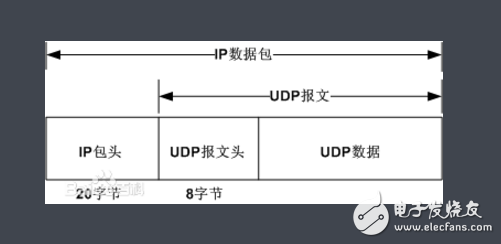UDP is the abbreviation of User Datagram Protocol. Chinese name is User Datagram Protocol. It is a connectionless transport layer protocol in OSI (Open System InterconnecTIon) reference model, providing transaction-oriented simple and unreliable information transmission service. IETF RFC 768 is the official specification of UDP. The protocol number of UDP in IP packets is 17.
The full name of the UDP protocol is the User Datagram Protocol, which is used in the network to process data packets in the same way as the TCP protocol. It is a connectionless protocol. In the OSI model, in the fourth layer, the transport layer, is on the upper layer of the IP protocol. UDP has the disadvantage of not providing packet grouping, assembly, and sorting of data packets. That is, after a message is sent, it is impossible to know whether it is safely and completely arrived. UDP is used to support web applications that need to transfer data between computers. Numerous client/server mode network applications, including network video conferencing systems, require the use of the UDP protocol. The UDP protocol has been in use for many years since its inception. Although its initial brilliance has been overshadowed by some similar protocols, even today UDP is still a very practical and feasible network transport layer protocol.
Like the well-known TCP (Transmission Control Protocol) protocol, the UDP protocol is directly on top of the IP (Internet Protocol) protocol. According to the OSI (Open Systems Interconnection) reference model, both UDP and TCP belong to the transport layer protocol. The main function of the UDP protocol is to compress network data traffic into the form of data packets. A typical data packet is a unit of transmission of binary data. The first 8 bytes of each packet are used to contain header information, and the remaining bytes are used to contain specific transmission data.
UDP is a connectionless transport layer protocol in the OSI reference model. It is mainly used in transmissions that do not require packet sequence arrival. The inspection and ordering of packet transmission order is completed by the application layer [2], providing transaction-oriented simple and unreliable. Information transfer service. The UDP protocol is basically the interface between the IP protocol and the upper layer protocol. The UDP protocol applies to multiple applications running on the same device.
UDP provides connectionless communication and does not guarantee the reliability of transmitted packets. It is suitable for transmitting a small amount of data at a time. The reliability of UDP transmission is the responsibility of the application layer. Commonly used UDP port numbers are:
Application protocol port number
DNS 53
TFTP 69
SNMP 161
UDP packets do not have reliability guarantee, sequence guarantee, and flow control fields. The reliability is poor. However, because the UDP protocol has fewer control options, the delay in data transmission is small, and the data transmission efficiency is high. It is suitable for applications that do not require high reliability, or applications that can guarantee reliability, such as DNS, TFTP, and SNMP. Wait.
The location of UDP in the IP packet is as shown.

Characteristics of UDP: The UDP protocol uses the services provided by the IP layer to transfer data obtained from the application layer from one application of one host to an application on another host on the network.
The UDP protocol has the following features:1. UDP does not establish a connection with the other party before transmitting data, that is, UDP is connectionless. Before transmitting data, the sender and the receiver exchange information with each other to synchronize the two parties.
2. UDP does not sort the received data. There is no information about the data sequence in the header of the UDP packet (such as the serial number used by TCP), and the message does not arrive in order, so the receiving end does not have to queue up. .
3. UDP does not send an acknowledgment signal to the received datagram. The sender does not know whether the data is correctly received or retransmitted.
4. UDP transmits data faster than TCP and has less system overhead. From the above characteristics, UDP provides a connectionless and unreliable data transmission method, and is a best-effort data delivery service.
UDP usage:In order to identify multiple destination addresses on a given host, while allowing multiple applications to work on the same host and to independently send and receive packets, the User Datagram Protocol UDP is designed.
Use UDP protocol including: TFTP, SNMP, NFS, DNS, BOOTP
UDP uses the underlying Internet Protocol to deliver messages, providing the same untrusted connectionless packet delivery service as IP. It does not provide functions such as message arrival confirmation, sorting, and flow control.
When choosing to use the protocol, you must be cautious when choosing UDP. In an environment where network quality is very unsatisfactory, UDP protocol packet loss will be more serious. However, due to the characteristics of UDP: it is not a connection type protocol, so it has the advantages of low resource consumption and fast processing speed. Therefore, audio, video and normal data are usually transmitted using UDP because they lose even one or two data occasionally. The package does not have much impact on the reception results. For example, ICQ and QQ used for our chat are the UDP protocol used.
Din Connector,Waterproof Cable Connector,Ip66 Wire Waterproof Connector,Waterproof Power Connector
Shenzhen Hongyian Electronics Co., Ltd. , https://www.hongyiancon.com